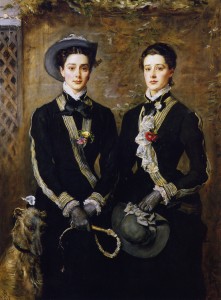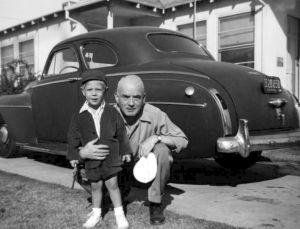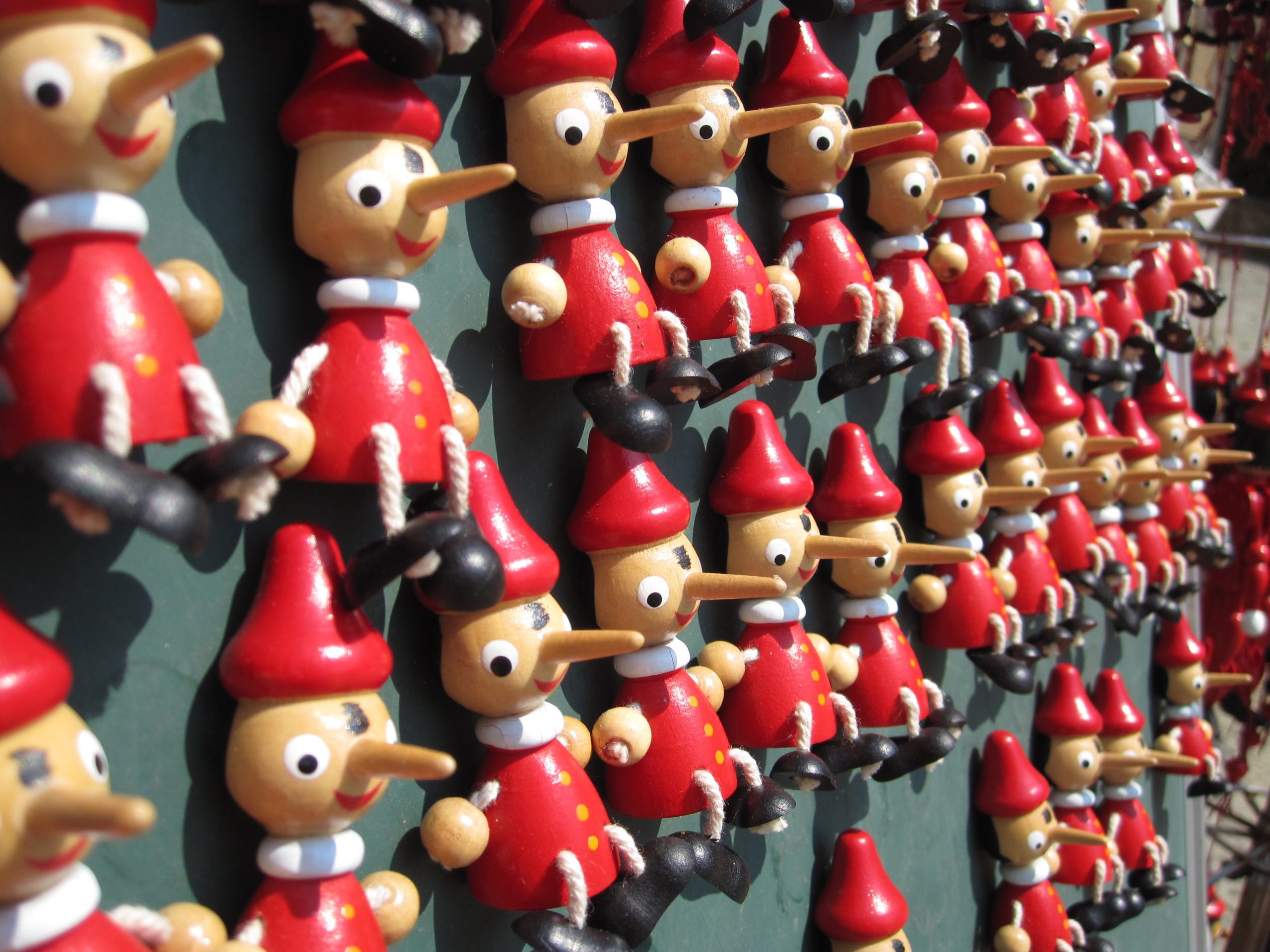Chapter 3. Socialization, Social Interaction and the Social Self
3.2. Why Socialization Matters
Socialization is critical both to individuals and to the societies in which they live. It illustrates how completely intertwined human beings and their social worlds are. First, it is through teaching culture to new members that a society perpetuates itself. If new generations of a society do not learn its way of life, it ceases to exist. Whatever is distinctive about a culture must be transmitted to those who join it, in order for a society to survive. For Canadian culture to continue, for example, children in Canada must learn about cultural values related to democracy: They have to learn the norms of voting, as well as how to use material objects such as a ballot. Of course, some would argue that it is just as important in Canadian culture for the younger generation to learn the etiquette of eating in a restaurant or the rituals of tailgate parties after baseball games. In fact, there are many ideas and objects that Canadians teach children in hopes of keeping the society’s way of life going through another generation.

Socialization is just as essential to individuals. Social interaction provides the means by which people gradually become able to see themselves through the eyes of others, learning who they are and how they fit into the world around them. In addition, to function successfully in society, people must learn the basics of their culture, everything from how to dress themselves to what is suitable attire for a specific occasion; from when to sleep to what to sleep on; and from what is considered appropriate to eat for dinner to how to use the stove to prepare it. Most importantly, people have to learn language — whether it is the dominant language or a minority language, whether it is verbal or through signs — in order to communicate and to think. As discussed earlier with the case of Danielle, without socialization, an individual would literally have no self. An individual would be unable to function socially.
Nature versus Nurture
Some experts assert that who people are is the result of nurture — the relationships and caring that surround them. Others argue that who people are is based on genetics. According to this belief, a person’s temperaments, interests, and talents are set before birth. From this perspective, then, who people are depends on nature.

One way that researchers attempt to prove the impact of nature is by studying twins. Some studies followed identical twins who were raised separately. The pairs shared the same genetics, but, in some cases, were socialized in different ways. Instances of this type of situation are rare, but studying the degree to which identical twins raised apart are the same or different can give researchers insight into how our temperaments, preferences, and abilities are shaped by our genetic makeup versus our social environment.For example, in 1968, twin girls born to a mentally ill mother were put up for adoption. However, they were also separated from each other and raised in different households. The parents, and certainly the babies, did not realize they were one of five pairs of twins who were made subjects of a scientific study (Flam, 2007).
In 2003, the two women, by then age 35, were reunited. Elyse Schein and Paula Bernstein sat together in awe, feeling like they were looking into a mirror. Not only did they look alike, but they behaved alike, using the same hand gestures and facial expressions (Spratling, 2007). Studies like this point to the genetic roots of our temperament and behaviour.
On the other hand, studies of identical twins have difficulty accounting for divergences in the development of inherited diseases. In the case of schizophrenia, epidemiological studies show that there is a strong biological component to the disease. The closer our familial connection to someone with the condition, the more likely we will develop it. However, even if our identical twin develops schizophrenia we are less than 50 percent likely to develop it ourselves. Why is it not 100 percent likely? What occurs to produce the divergence between genetically identical twins (Carey, 2012)?
One explanation combines sociology and genetics. The growing field of epigenetics reveals that the expression of our genetic inheritance depends much more than we have thought on environmental conditions (Segal et al., 2017). Cellular variations in gene expression between identical twins can lead to large differences in health, personality, and even physical appearance. For example, the impact of astronaut Scott Kelly’s stay on the International Space Station meant that 7 per cent of his genes changed their expression, even months after his return to earth, although his genes themselves remained the same as his identical twin Mark (also an astronaut). With epigenetics, gene activity reacts in response to environmental stimuli at a cellular level. In other words, environment and lifestyle influence how genes are expressed.
In the end, however, as we noted in Ch.3, sociologists generally consider this a false debate. It is possible to acknowledge that humans are biological creatures with genetic predispositions and biological needs and to recognize that human behaviour is much, much more than this. The huge variations in human cultures that the anthropological record reveals that our socio-cultural environment has a significant impact. Whatever the similarities based in shared genetics, the lives of Elyse and Paula were each profoundly marked by their social environments. The life chances of these women and their very sense of self can only be fully understood by examining their social class, the gender expectations of their society and their interaction with parents, peers, co-workers … and each other. Whatever the role of genes or biology in our lives, genes are never expressed in a vacuum. Environmental influence always matters.
Making Connections: Case Study
The Life of Chris Langan, the Smartest Man You’ve Never Heard Of

Bouncer. Firefighter. Factory worker. Cowboy. Chris Langan (b. 1952) has spent the majority of his adult life just getting by with jobs like these. He has no college degree, few resources, and a past filled with much disappointment. Chris Langan also has an IQ of over 195, nearly 100 points higher than the average person (Brabham, 2001). So why didn’t Chris become a neurosurgeon, professor, or aeronautical engineer? According to Macolm Gladwell in his book Outliers: The Story of Success (2008), Chris didn’t possess the set of social skills necessary to succeed on such a high level — skills that aren’t innate, but learned.
Gladwell (2008) looked to a recent study conducted by sociologist Annette Lareau in which she closely shadowed 12 families from various economic backgrounds and examined their parenting techniques. Parents from lower-income families followed a strategy of “accomplishment of natural growth,” which is to say they let their children develop on their own with a large amount of independence; parents from higher-income families, however, “actively fostered and accessed a child’s talents, opinions, and skills” (Gladwell, 2008). These parents were more likely to engage in analytical conversation, encourage active questioning of the establishment, and foster development of negotiation skills. The parents were also able to introduce their children to a wider range of activities, from sports to music to accelerated academic programs. When one middle class child was denied entry to a gifted and talented program, the mother petitioned the school and arranged additional testing until her daughter was admitted. Lower-income parents, however, were more likely to unquestioningly obey authorities such as school boards. Their children were not being socialized to comfortably confront the system and speak up.
What does this have to do with Chris Langan, deemed by some as the smartest man in the world (Brabham, 2001)? Chris was born in severe poverty, and he was moved across the country with an abusive and alcoholic stepfather. Chris’s genius went greatly unnoticed. After accepting a full scholarship to Reed College, his funding was revoked after his mother failed to fill out necessary paperwork. Unable to successfully make his case to the administration, Chris, who had received straight A’s the previous semester, was given F’s on his transcript and forced to drop out. After enrolling in Montana State University, an administrator’s refusal to rearrange his class schedule left him unable to find the means necessary to travel the 16 miles to attend classes. What Chris has in brilliance, he lacks in practical intelligence, or what psychologist Robert Sternberg defines as “knowing what to say to whom, knowing when to say it, and knowing how to say it for maximum effect” (Sternberg et al., 2000). Such knowledge was never part of his socialization.
Chris gave up on school and began working an array of blue-collar jobs, pursuing his intellectual interests on the side. Though he’s recently garnered attention from work on his “Cognitive Theoretic Model of the Universe,” he remains weary and resistant of the educational system.
As Gladwell (2008) concluded, “He’d had to make his way alone, and no one — not rock stars, not professional athletes, not software billionaires, and not even geniuses —ever makes it alone.”
Individual and Society
How do sociologists explain both the conformity of behaviour in society and the existence of individual uniqueness? The concept of socialization raises a classic problem of sociological analysis: the problem of agency. How is it possible for there to be individual differences, individual choice, or individuality at all if human development is about assuming socially defined roles? Since Western society places such value on individuality, in being oneself or in resisting peer pressure and other pressures to conform, the question of where society ends and where the individual begins often is foremost in the minds of students of sociology. Numerous debates in the discipline focus on this question.
However, from the point of view emphasized in this chapter, it is a false question. As noted previously, for Mead the individual “agent” already is a “social structure.” No separation exists between the individual and society; the individual is thoroughly social from the inside out and vice versa. This in no way entails individuals in any society are homogenous. Sociologists argue that individuals vary because the social environments to which they adapt vary. No two individuals have experienced exactly the same set of interactions in the same social and environmental context. Children gradually develop stable and consistent orientations to world, each to some degree unique because each is formed from the vantage point unique to the place in society the child occupies. Individual variation and individual agency are possible because society itself varies in each social situation. Indeed, the configuration of society itself differs according to each individual’s contribution to each social situation.

Structural Functionalism, Critical Sociology, and Symbolic Interactionism
Sociologists all recognize the importance of socialization for healthy individual and societal development. But how do scholars working in the theoretical paradigms of structural functionalism, critical sociology, and symbolic interactionism approach this topic?
Structural functionalists would say that socialization is an essential function in society, both because it trains members to operate successfully within it and because it perpetuates culture by transmitting it to new generations. Individuals learn and assume different social roles as they age because different responsibilities and tasks are expected of them. These roles come with relatively fixed norms and social expectations attached, which allow for predictable interactions between people. Nevertheless, how the individual lives and balances their roles is subject to variation.
A critical sociologist might argue that the norms and behaviours that socialization teaches us are those that benefit the dominant groups in society. In capitalist societies socialization instills values of individuality, hard work, ‘survival of the fittest’ and self-reliance rather than cooperation and social responsibility. We learn to blame the poor for their situation and to celebrate the success of billionaires. Socialization reproduces inequality from generation to generation by conveying different expectations and norms to those with different social characteristics. For example, individuals are socialized with different expectations about their place in society according to their gender, social class, and race. As in the life of Chris Langan, this creates different and unequal opportunities. Feminist critical sociologists would note that patriarchal attitudes and behaviours, including ideas about childrearing and care work are learned and relearned. This perspective would also argue that it is through socialization that we learn racist, homophobic and other ideas that harm vulnerable and unequal populations. Most importantly, it is through socialization that we ‘learn’ to accept such inequalities as ‘normal’. This perspective would also note that it is through interacting with others that we can be ‘resocialized’ to question existing social arrangements a process that happens among friends, when participating in social movements … and in sociology classes.
A symbolic interactionist studying socialization is concerned with face-to-face exchanges and symbolic communication. For example, dressing baby boys in blue and baby girls in pink is one small way that messages are conveyed about differences in gender roles. For the symbolic interactionist, though, how these messages are formulated and how they are interpreted are always situational, always renewed, and defined by the specific situations in which the communication occurs. Socialization is not a book of social rules that we are given but an ongoing process of interaction with others in specific situations.
Media Attributions
- Figure 5.12 FullCircle by Niyam Bhushan, via Flickr, is used under a CC BY 2.0 licence.
- Figure 5.13 John Everett Millais (1829-1896) – The Twins, Kate and Grace Hoare – PD.36-2005 – Fitzwilliam Museum, by John Everetty Millais/ Fizwilliam Museum, ID 125024, via Wikimedia Commons, is in the public domain.
- Figure 5.14 Christopher Langan Young, from Darien Long, via Wikimedia Commons, is used under a CC BY 2.0 licence.
- Figure 5.15 [figures, holzfigur, pinocchio, males, arts crafts, wood carving…] from PxHere is used under a CC0 Universal Public Domain Dedication licence.

